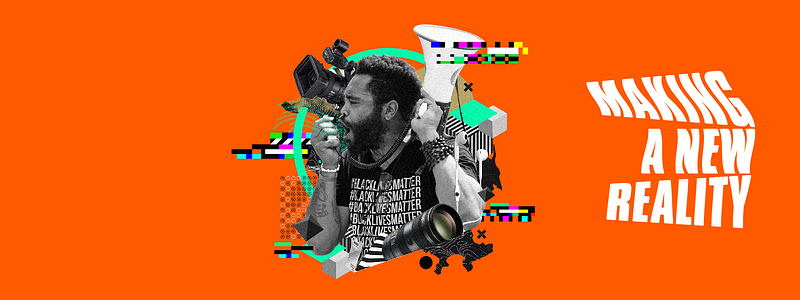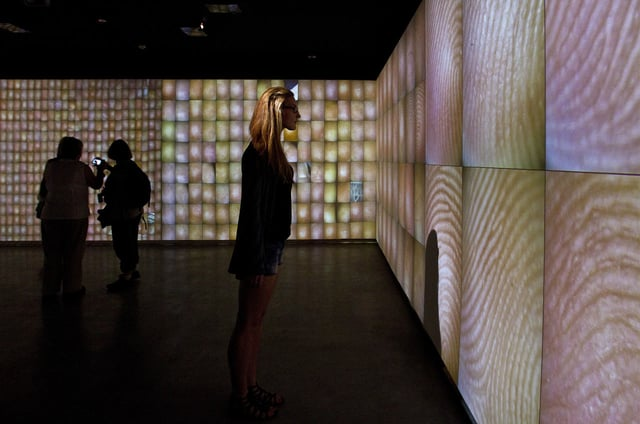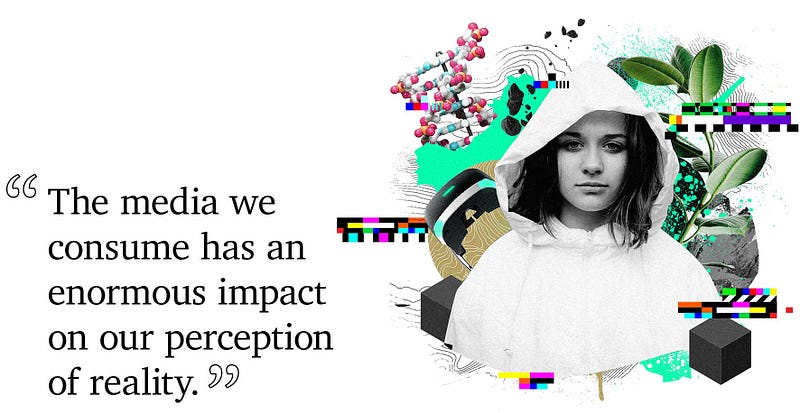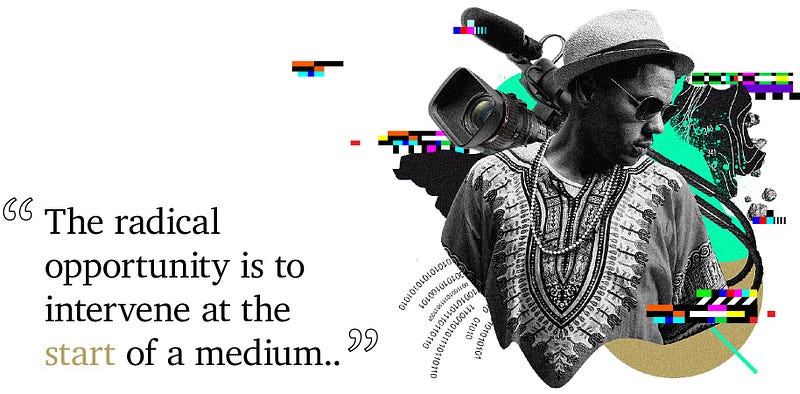
Strategies to mitigate bias in emerging media
“Why are people pushing back so much when it comes to this revolutionarily helpful technology? Because it’s kind of scary. But it’s also going to change the world we live in for the better.” — Goutham Koundinya, Tech.co
The last installment of Making a New Reality outlined the vulnerabilities of biases in emerging media. However, for every concern identified, the interviewees also identified a potential solution.
This article aims to share those ideas, to encourage a critical mass of people, communities and institutions to find and implement solutions. With a coordinated effort we just might be able to optimize the evolving communication infrastructure for the inclusive advancement of human well-being.
 Rafael Lozano-Hemmer,
Pulse Index
Rafael Lozano-Hemmer,
Pulse IndexWhat is the objective?
One of the main objectives for mitigating bias expressed by interviewees was to ensure diverse, authentic, and complex representation in emerging media.
Why?
Social and political science research, as well as psychology, genetics, and neurology, shows that the media we consume has an enormous impact on our perception of reality. What we see, hear, touch, taste, and smell communicates to our brains about who we are in relation to everything and everyone in the world. It even has influence on the very formation of our DNA, considering research that suggests that PTSD can mutate our DNA and become part of the genetic code we pass on to future generations. Our perceptions directly influence behavior towards each other in a million daily interactions and decisions. For many complex and varied reasons, the history of mass media has overwhelmingly failed to fairly or authentically represent the majority of identity groups and cultures on the planet. This is a key part of the formation and perpetuation on bias.

Morgan Willis, Director of the Allied Media Conference shared an observation of this unconscious bias, “When listening to the [2017] Golden Globes, I was struck by the number of people who referred to the nonexistent movie Hidden Fences [a conflation of two black films that were nominated, Hidden Figures and Fences]. To Hollywood, these films were one movie. It really illuminated how far we still need to go in making marginalized groups fully visible. Especially when both of these films come from historical trajectories that are critical for us to continue to bring to the surface of what we’re talking about as a country right now… To the eyes of people who are holding power, these films have been reduced to ‘black historical film.’ It makes me keenly aware of what Hollywood is willing to put their dollars behind when it comes to stories [about people] of color. You have immigrant narratives. You have black-people-rise-up-in-the-face-of-injustice narratives. You have other very clear and consistent narratives that allow people to continue to be lumped together, because film studio executives continue to see diversity as a lumped-together idea.”
Willis goes on to explain the artists and producers making these important films about voices that have been marginalized and that help illuminate the full spectrum of our humanity through nuanced storytelling have done their part in furthering inclusion and equity in media. However, those in power in the industry need to do their part by giving these films a “larger social context” than just the “diversity” film of the year. “Watching the Golden Globes, I was thinking, ‘All these people hate Trump. They’re not into what’s going on politically, but they’re absolutely and totally complicit in all of these systems that are creating these monolithic projects.” The storytelling around the story needs to shift cultural bias by validating the films as unique and nuances additions to the canon of film.

What is the opportunity?
Practitioners such as Jenn Duong, who co-founded the virtual reality company SH//FT, see a rich opportunity to achieve fair representation in emerging media such as VR. In the year she and co-founder Julie Young started the company, the global population of people that had experienced VR was minuscule. Also, the content was incredibly narrow. In fact most experiences were basically demos for the hardware companies. What a perfect time to put a stake in the ground and claim the medium as a place for women, to ensure women were more fairly represented!
“What’s so powerful about stories is they shape our worldview,” says Duong. “Everything that we know, is informed by what we see on TV. I think a lot of the reasons why little girls are like, ‘Oh, I’ll be a nurse,’ is because there are so many shows and movies where all the doctors are men…. If we can get diverse voices into VR now and create more diverse content, that’s going to be really powerful. The storytelling that shapes our worldviews now is so male-dominated, it’s creating a singular worldview that everyone sees but is not reflective of what the world actually is. That terrifies me.… It’s especially important because VR is going to affect every medium in some shape or form… Emerging technology is going to be a part of education, medical research. It’s going to touch everything. So, we thought, if we make the principles of equality cornerstones now, it’s going to trickle down. Hollywood will have no choice but to adapt.”
The radical opportunity is to intervene at the start of a medium, so we can “bend the technology to justice and not allow it to replicate, entrench, and worsen injustice.”
How do we achieve this objective?
Here are some thoughtful ideas, strategies and existing models for mitigating bias that we discussed with interviewees.
- Promote Awareness of Personal Bias
- Make Bias Blind
- Construct Authentic Diversity
- Use the Amplification Strategy
- Lean in or Adjust the Center of Design
- Lower Barriers to Entry and Create New Pipelines
- Disrupt Dependency and Rigid Bias Narratives
- Encourage and Model Allyship
- Make a Business Case
The Making a New Reality research project is authored by Kamal Sinclair with support from the Ford Foundation JustFilms program and supplemental support from the Sundance Institute. Learn more about the goals and methods of this research, who produced it, and the interviewees whose insights inform the analysis.
Immerse is an initiative of Tribeca Film Institute, MIT Open DocLab and The Fledgling Fund. Learn more about our vision for the project here.